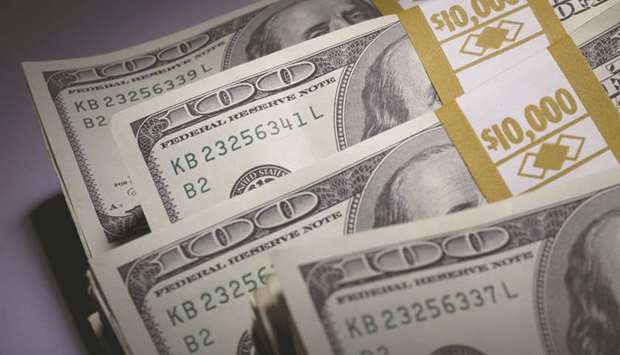The dollar stumbled yesterday, falling for eight straight weeks, as investors continued to shun it and looked to other currencies whose economies are currently outperforming that of the United States in terms of managing the coronavirus pandemic.
The delay in the passage of additional US stimulus for virus relief did not help the dollar’s cause as well.
The dollar’s eight straight weeks of losses was its longest run of weakness in a decade, Refinitiv data showed, with Friday’s decent batch of US economic data failing to lift the greenback. “The fact is the domestic coronavirus in the United States is the worst epidemic of any comparable economy and that’s because of the lack of management from the US authorities,” said Ranko Berich, head of market analysis, at Monex Europe in London. “That has meant the outbreak has created a materially worse outlook for the US economy than its peers.” Hopes for additional stimulus to combat the pandemic have faded yesterday, with the Senate and House of Representatives in recess and no fresh talks scheduled with US President Donald Trump’s negotiators.
In late morning trading, the dollar index slipped 0.2% to 93.105, on pace for eight consecutive weeks of losses, the worst losing streak since June 2010.
The dollar showed little reaction to data showing a 1.2% rise in the US retail sales’ headline number in July, which was lower than expected, but a higher than forecast gain of 1.9%, excluding autos.
Other reports such as consumer sentiment and industrial production had little dollar impact on Friday.
Against other currencies, the dollar was on track to post its best weekly percentage gain versus the yen in two months. It was last down 0.5% at 106.45 yen. The euro, meanwhile, continued its rise, up 0.1% at $1.1827, rising for eight straight weeks.
Growing faith in Europe’s rebound and concern about the US response as the coronavirus spreads and politicians remain deadlocked over the next relief package have bolstered the euro.
The pound was also 0.4% higher against the dollar at $1.3110, as investors sought to focus on a rebound in growth in June rather than a stunning 20% quarterly contraction.
The biggest loser this week has been the New Zealand dollar, which was down 0.8% against the dollar this week, on pace for its worst weekly fall since mid-June.

The dollar stumbled yesterday, falling for eight straight weeks, as investors continued to shun it and looked to other currencies


